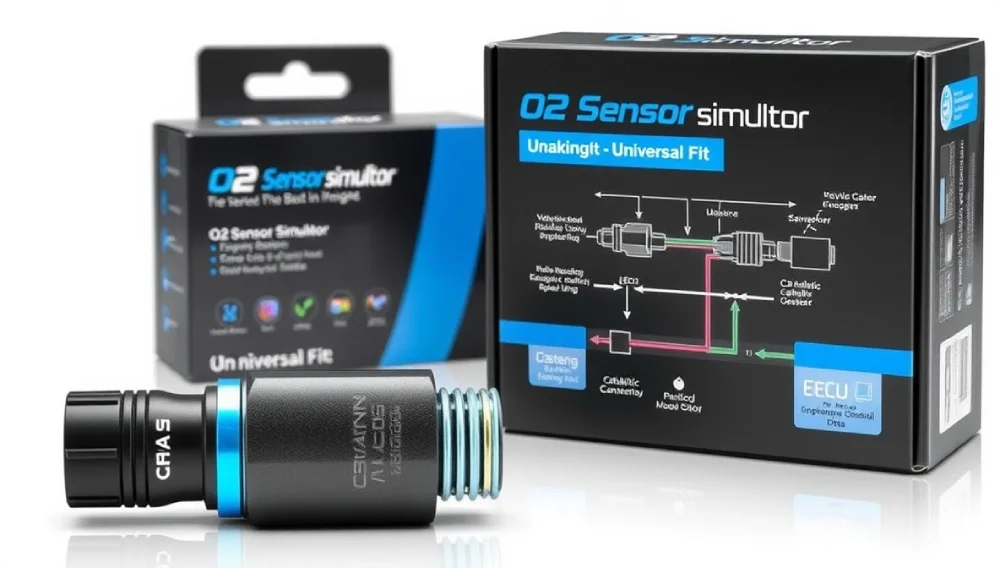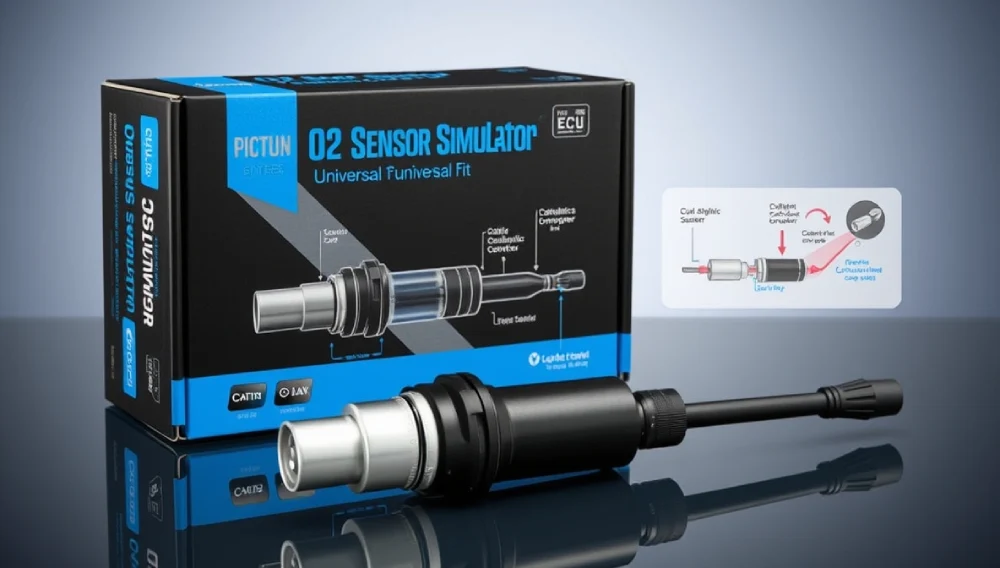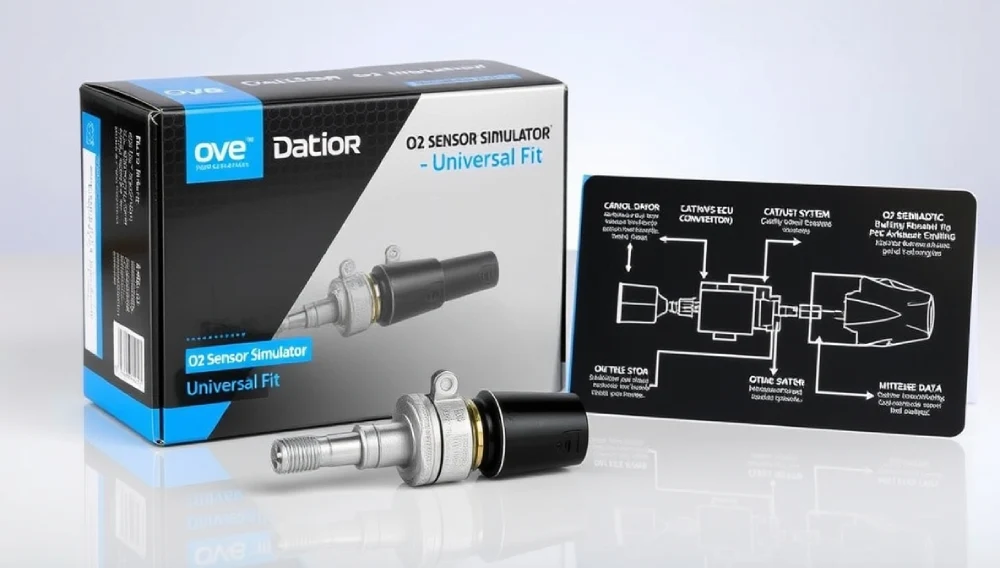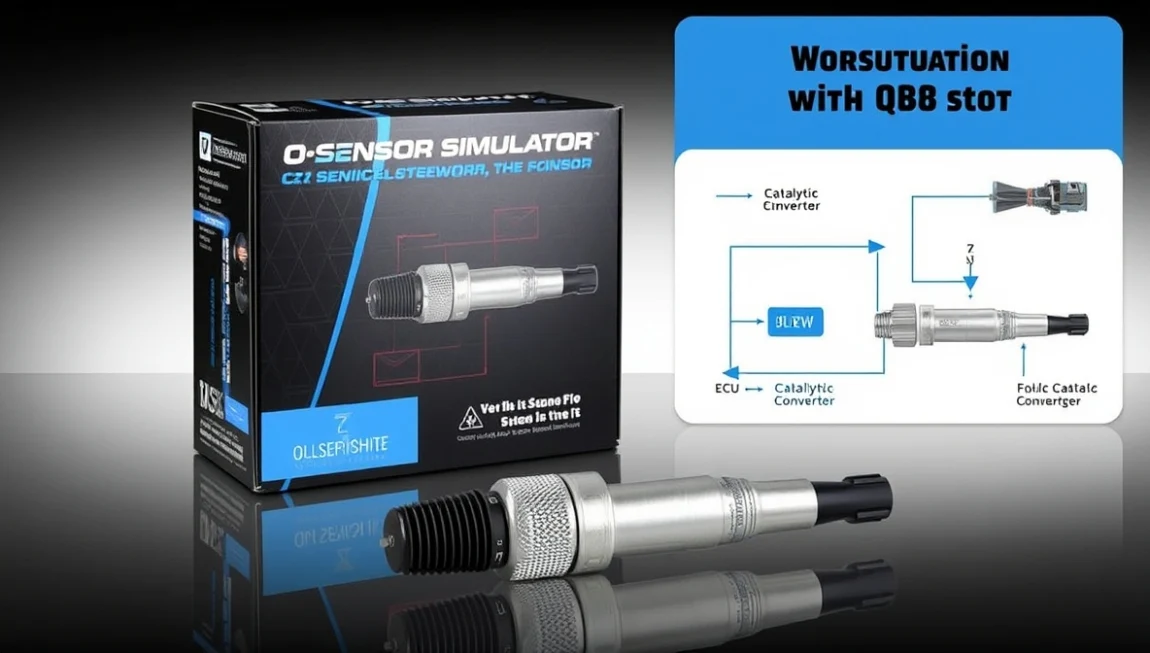
Hello! If you are new to automation or even if you have just recently entered into working with vehicles or industrial systems, you must learn about the O2 sensor simulator. It may seem a bit too technical on the surface, but when you break it down, you’ll understand just how critical it is in helping test and improve sensor systems. This tutorial will lead you step-by-step through everything that you need to know about O2 sensor simulators in clear, easy-to-understand language.
What is an O2 Sensor Simulator?
Think of an O2 sensor simulator as a “stand-in” actor for a live O2 sensor. You’ve tried to troubleshoot and test an O2 sensor in the past, I guess, in the vehicle or device, and I know how frustrating that can be. That’s what the simulator accomplishes. It simulates the way a real oxygen sensor would behave under test conditions so you could test and get your systems calibrated without having a live sensor available.
Tech Simplified
An O2 sensor simulator is simply an electronic device that mimics the output signal of a real oxygen sensor. It delivers the same type of output a real O2 sensor would deliver to the Engine Control Unit (ECU) or to any automation system. This allows technicians to test the systems that depend on the O2 sensor without the need to handle a faulty or expensive real sensor.

Why is the O2 Sensor Simulator Significant?
You may ask, “Why not simply use an actual O2 sensor?” Well, here’s the reason why the simulator is so significant in automation and car testing:
- 1. Time-Saving
- Sometimes it takes a lot of time to test using an authentic O2 sensor. A defective sensor can be time-consuming and expensive to repair if replaced.
- The simulator saves time by quickly performing the simulation, enabling engineers or automation engineers to test without the waiting time for replacement parts.
- 2. Cost-Effective
- Rather than actually working on an existing sensor (which can be expensive to replace), the O2 sensor simulator allows you to emulate varying levels of sensor reading, preventing you from carrying out unnecessary replacements.
- 3. Simple Troubleshooting
- The O2 sensor is critical to vehicle emissions control and engine operation. With a simulator, you can have it guaranteed that the systems that depend on it—fuel efficiency, air-fuel ratio, and exhaust—are all in good working condition without having to test with the actual sensor mounted.
How Does an O2 Sensor Simulator Work?
Let’s break it down with an analogy.
Assume that you have a smart home system that controls your air conditioner, lights, and security cameras. Instead of testing it with live devices, you test it with a “virtual assistant” that emulates the behavior of each device to ensure all work smoothly. The O2 sensor simulator performs the same action—it emulates the sensor’s behavior for testing.

Tech Behind It
An O2 sensor simulator is designed with some major functions:
Signal Generation: It produces voltage signals like those an actual O2 sensor would produce, such as changing voltage with oxygen concentration in the exhaust.
Calibration: It allows for the ECU to be calibrated by providing reproducible signals that simulate varying operating conditions.
Testing Under Different Conditions: With an O2 sensor simulator, you can test the system’s reaction under high or low oxygen conditions without having to drive a vehicle or use a machine.
Where is the O2 Sensor Simulator Used?
Vehicle Diagnostics
In car repair, particularly for O2 sensors of older models like the 2002 F150, an O2 sensor simulator is used in many cases to diagnose issues with the performance of the engine. If your car has a faulty O2 sensor, you can use the simulator to determine if the air and fuel mixture is performing as expected.
Automation Systems
In industrial automation systems, an O2 sensor simulator can be used to test the functionality of automation components. As an example, in monitoring air quality or controlling factory emissions, the tool assists in ensuring that the system’s feedback loop is functioning accordingly.
Education and Training
For students who are learning automation and sensor systems, an O2 sensor simulator is a perfect choice. The device enables beginners and students to know how sensors function with systems under a safe and easy-to-use setting.
Utilizing an O2 Sensor Simulator
Plugging in and applying an O2 sensor simulator is quite easy but should be carried out through the correct process to ensure the correct function.
Items Needed:
- Multimeter (used in testing the simulator’s output)
- O2 sensor simulator unit
- Wiring harness (to plug into the system)
Steps:
- Connect the Simulator: Plug the simulator into the system where you would install the actual O2 sensor. Make sure the wires are proper and tight.
- Set the Settings: Set the simulator to simulate what you wish to test. If you wish to test high oxygen levels, set the simulator to that level of output.
- Monitor Output: Attach a multimeter to monitor the signal output of the simulator. Ensure it must be in the range that is expected for the system under test.
- Test the System: Run the system in its normal operation and monitor the response to the signals of the simulator.
Pro Tip:
- Regularly clean the connections to prevent signal interference.
- Always use the correct voltage settings for your specific system.

Common Issues & Fixes
| Problem | Cause | Fix |
| No Signal Output | Faulty simulator or loose wiring | Check wiring connections and test with a multimeter. |
| Erratic Signals | Low battery or malfunction | Replace the battery or recalibrate the simulator. |
| Compatibility Issues | Mismatched voltage settings | Adjust the voltage settings to match the system’s requirements. |
Future of the O2 Sensor Simulator
As cars and automation systems get more advanced, so will the demand for O2 sensor simulators. Just think about being able to simulate real-time diagnostics to predict failures before they happen. With intelligent sensors and AI integration, next-generation O2 sensor simulators could be able to predict sensor failure based on wear patterns and even suggest maintenance.
Final Thoughts
The O2 sensor simulator may not be the flashiest piece of hardware in the automation arsenal, but it’s one of the most critical. From working on automotive diagnostics to industrial controls, the O2 sensor simulator makes it possible for the systems that rely on sensors to operate efficiently, safely, and smoothly. With the ability to save time, and money, and serve as a fail-safe test, the O2 sensor simulator is instrumental in ensuring automation systems operate at maximum capability.


1 thought on “The O2 Sensor Simulator A Beginner’s Guide”